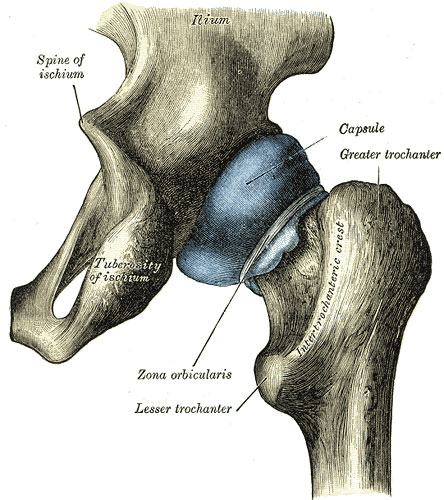
700 Glenhuntly Road
Caulfield VIC 3162
03 9044 4555

700 Glenhuntly Road
Caulfield VIC 3162
03 9044 4555
Hip Joint Anatomy and Function
The hip is a ball-and-socket joint, connected and housed inside a very tough capsule. The ball (the femoral head) is at the top of the thigh-bone (femur) and is lined with gristle (articular cartilage) which has an extremely slippery surface to allow it to move with minimal friction inside the socket (acetabulum). The inner surface of the acetabulum also has a very slippery cartilage surface. Together these two slippery surfaces normally allow the hip joint to twist and rotate freely, without pain. At the edge of the acetabulum, immediately continuous with and adherent to the acetabular articular cartilage there is a specialised ring of fibro-cartilage called the acetabular labrum (or “lip”). The acetabular and femoral head cartilage surfaces are coated with an extremely thin film of synovial fluid, which nourishes and lubricates the cartilage. The synovial fluid is produced by the inner lining of the hip joint capsule, called synovium or synovial membrane. The function of the acetabular labrum is to act like a gasket ring in the hip joint, ensuring that the synovial fluid lubricating the articular cartilage of the hip joint is kept in place and doesn’t leak out. Normal movement of the hip joint is required for painless, simple everyday activities, such as standing, walking, sitting, squatting or managing stairs. When the hip joint becomes diseased, all these seemingly simple things become much more of a painful chore, and in extreme cases they may be impossible.

The information above is general. All surgical procedures involve some risk. If you would like advice on your specific condition, please contact Oasis Orthopaedics to make an appointment with one of our specialists.
